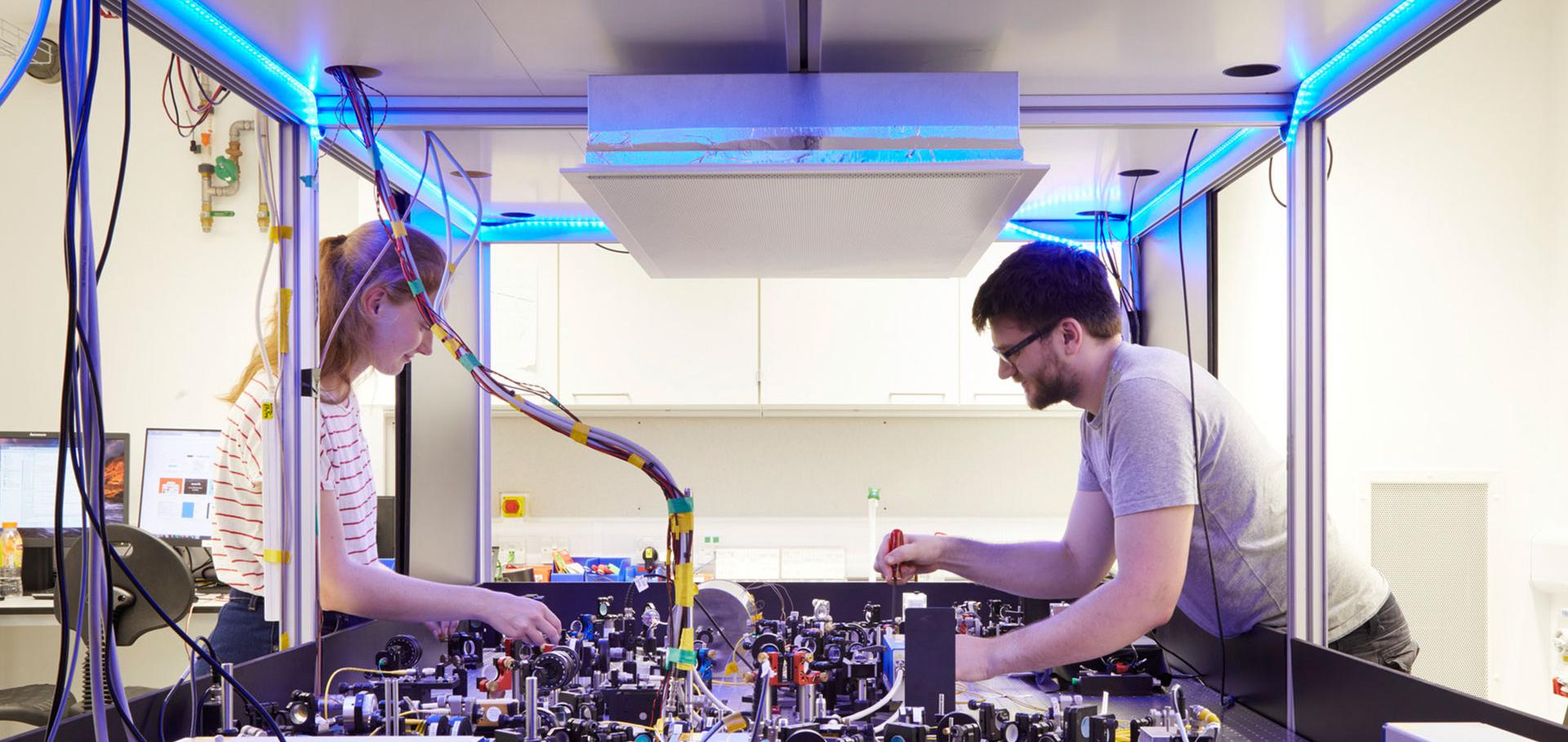Entanglement fidelity of quantum memories
Physical Review A - Atomic, Molecular, and Optical Physics 74:5 (2006)
Abstract:
We introduce a figure of merit for a quantum memory which measures the preservation of entanglement between a qubit stored in and retrieved from the memory and an auxiliary qubit. We consider a general quantum memory system consisting of a medium of two level absorbers, with the qubit to be stored encoded in a single photon. We derive an analytic expression for our figure of merit taking into account Gaussian fluctuations in the Hamiltonian parameters, which, for example, model inhomogeneous broadening and storage time dephasing. Finally we specialize to the case of an atomic quantum memory where fluctuations arise predominantly from Doppler broadening and motional dephasing. © 2006 The American Physical Society.Signatures of the superfluid to Mott-insulator transition in the excitation spectrum of ultracold atoms
New Journal of Physics 8 (2006)
Abstract:
We present a detailed analysis of the dynamical response of ultracold bosonic atoms in a one-dimensional optical lattice subjected to a periodic modulation of the lattice depth. Following the experimental realization by Stöferle et al (2004 Phys. Rev. Lett. 92 130403), we study the excitation spectrum of the system as revealed by the response of the total energy as a function of the modulation frequency ω. By using the Time Evolving Block Decimation algorithm, we are able to simulate one-dimensional systems comparable in size to those in the experiment, with harmonic trapping and across many lattice depths ranging from the Mott-insulator (MI) to the superfluid (SF) regime. Our results produce many of the features seen in the experiment, namely a broad response in the SF regime, and narrow discrete resonances in the MI regime. We identify several signatures of the SF-MI transition that are manifested in the spectrum as it evolves from one limit to the other. © IOP Publishing Ltd and Deutsche Physikalische Gesellschaft.Solid-state physics: supersolid simulations.
Nature 442:7099 (2006) 147-149
Probing BEC phase fluctuations with atomic quantum dots
New Journal of Physics 8 (2006)
Abstract:
We consider the dephasing of two internal states |0〉 and |1〉 of a trapped impurity atom, a so-called atomic quantum dot (AQD), where only state 1〉 couples to a Bose-Einstein condensate (BEC). A direct relation between the dephasing of the internal states of the AQD and the temporal phase fluctuations of the BEC is established. Based on this relation we suggest a scheme to probe BEC phase fluctuations non-destructively via dephasing measurements of the AQD. In particular, the scheme allows to trace the dependence of the phase fluctuations on the trapping geometry of the BEC. © IOP Publishing Ltd and Deutsche Physikalische Gesellschaft.High-Field Fractional Quantum Hall Effect in Optical Lattices
Physical Review Letters 96 (2006) 180407, 4pp


